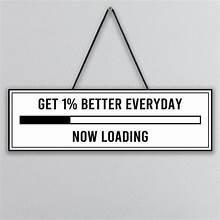
Team Roles at Work
Esseen tyyppi: Yksilöessee / 2 esseepistettä.
KIRJALÄHTEET
| KIRJA | KIRJAILIJA |
|---|---|
|
Team Roles at Work |
Meredith Belbin |
Introduction
During our history there has been different types of teams and roles within them. There are recorded team action and groupings even before 3000 years ago (Belbin,2010). Even though the social environment has been vastly different back then, people needed groups, a team, to survive.
It is known a team is successful when it combines an even amount of team roles. If there were too many of specific type, working would be different, slower and maybe even catastrophic. Think of ants. What would become of forest ants if there was only a few working on an anthill? It would take forever. But ants, as in every team, are given a role and they execute it. With different roles and team participants an anthill is built fast. (Belbin, 2010).
Team Role language
During our long history, team roles were given by different factors. They were either decided by your kin, status, gender or race (Belbin, 2010). One could say society has become far from what was before, even though some differential points still stands.
In Meredith Belbin’s, pHD, book Team Roles at Work (2010) he writes about the establishment of roles within a team and also how every team member and role is considered important when reaching a common goal.
When selecting team members, employers ought to consider hiring academically qualified people. What they do not consider is how they perform as part of a team. Are they all similar in work morals? Who gives crazy, out of the box ideas and who executes them? If we look at basketball, one can see that not everyone is chasing the ball, that would end in chaos. Every team member is designed a role that they carry through, each role giving space for other to execute themselves. (Belbin, 2010)
Before Belbin’s research about roles there were not any specific names for different team roles and their useful behaviors. Belbin redefined College Henley’s research on personality findings into nine different solid team roles. Humans personality and behavior can not be boxed easily but in Belbin’s research it focuses on one’s behavior in work environment; what motivates people, what is one’s strong driving force and one’s weaknesses. Therefore, a team needs a good balance of different roles to be stable working. “A poor (role) balance would produce a poor outcome.” states Belbin (2010), “Teams of able people would not necessarily produce favorable results since the balance might be wrong.”.
Belbin’s (2010) book goes through different job demands and states examples in which different team role types would thrive in or be a disaster in. It is clear not every human possible can excel in every job role given so it would be quite beneficial for employees to take these Belbin roles into account when recruiting. It came as a surprise for Belbin that job offers demanding specific skills would attract poor performing applicants and thus people usually being shortlisted got a chance to apply (Belbin, 2010). Then in picture comes suitability and eligibility. Which should employees rely on? In case study the suitability for a job demand preferred ineligible subjects (Belbin, Figure 4.2, 2010) to eligible.
Forming a team out of nowhere with balanced roles seems quite easy. But if one were to start a new hobby, a new major and work in teams should team roles be more difficult to balance. If a team is working on autopilot and without much needed guidance, one can assume their team roles and balance is ideal. But one can never know in which teams they are put if there is no one to coordinate said teams.
Job environments and milieus can work even without researching about Belbin’s team roles and making employees take the test. But it is believed to help a team performance when there is enough balance in team roles to complete a task or a project. Therefore, it is encouraged!
Sources
Belbin, M. 2010. Team Roles at Work. 2nd Edition E-Book. Published by Elsevier Ltd.



